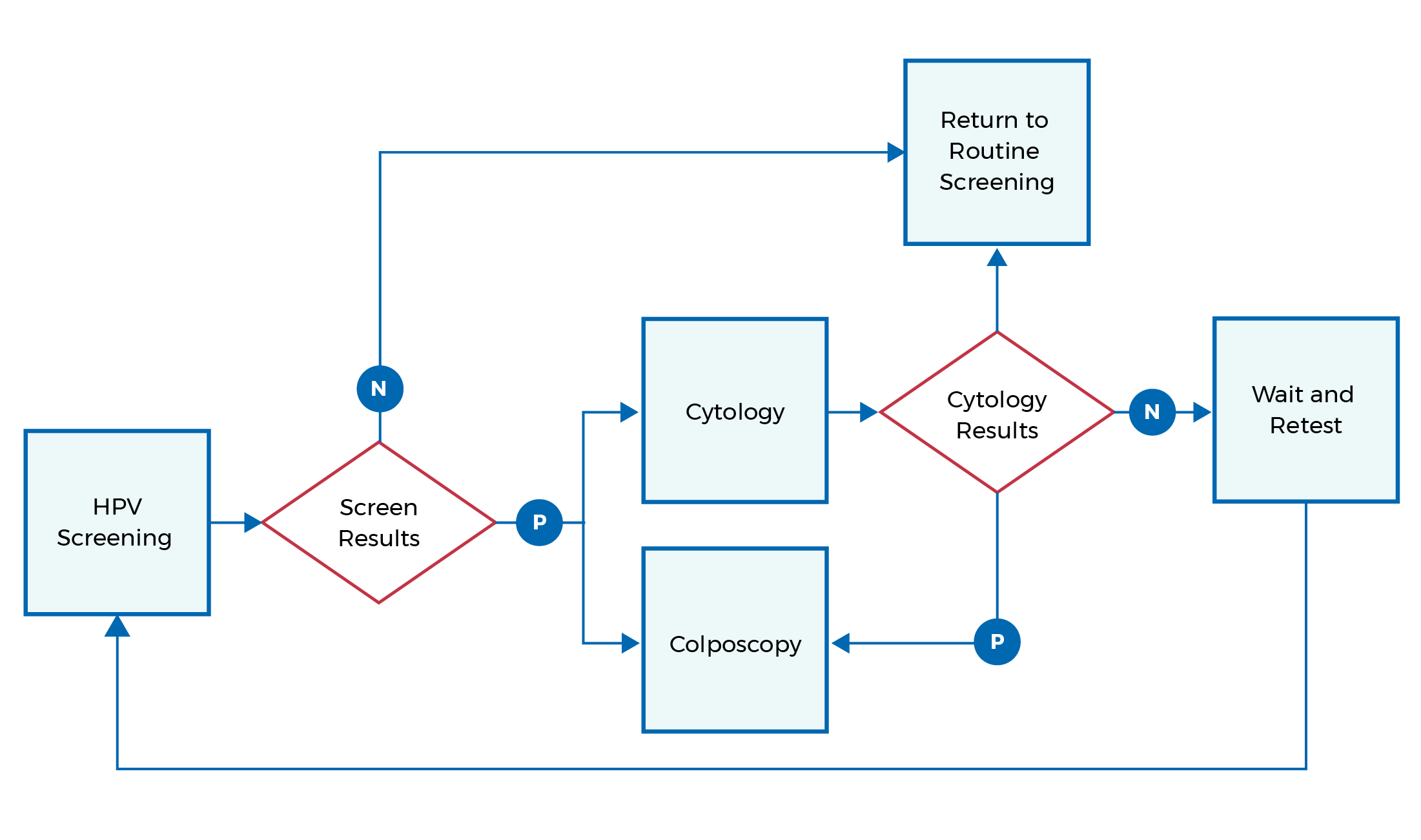HPV primary screening and abnormal screen follow-up
- Downloads
- Full report (pdf)
Cervical screening pathway steps
The cervical cancer screening pathways of the countries examined in this environmental scan varied but the steps are generalized into six steps.

Step 1: Screening invitation. Australia and the United Kingdom start screening for HPV at age 25 while Finland and the Netherlands start at age 30. A screening registry is used to store individuals’ contact information and screening history and manage invitation and reminder notifications for individuals due for screening. The frequency of HPV primary screening is typically every five years, though the United Kingdom screens people aged 25-49 every three years, and the Netherlands screens people aged 40 and 50 every 10 years.
Step 2: HPV primary screening. The initial screen is conducted by a clinician (often a general practitioner or nurse) or by the screening participant (if self-collection is permitted by the screening program). The sample is sent to a lab for analysis. If screening results are normal at this step, the HPV negative result is communicated back to the screening participant and they return to routine screening.
Step 3: Triage. Individuals who test positive for HPV during their initial screen need to be triaged to avoid over-referral to colposcopy. Generally, if a person tests positive for a high-risk strain of HPV (e.g., HPV 16/18), they will proceed directly to colposcopy. If a person tests positive for HPV but not one of the high-risk strains, they will typically have a Pap test and will undergo one or more periods of waiting and retesting, usually within six to twelve months.
 For example, in Australia, if a person tests positive for HPV 16/18 they will be referred to colposcopy. In the Netherlands, if a person tests positive for HPV they will have a Pap test. If the Pap test results show abnormal cells, they will be referred to colposcopy. If the Pap test result is negative, they will have a follow-up Pap test in six months and will then either return to normal screening (if the result is negative again) or be referred to colposcopy (if the result shows abnormal cells).
For example, in Australia, if a person tests positive for HPV 16/18 they will be referred to colposcopy. In the Netherlands, if a person tests positive for HPV they will have a Pap test. If the Pap test results show abnormal cells, they will be referred to colposcopy. If the Pap test result is negative, they will have a follow-up Pap test in six months and will then either return to normal screening (if the result is negative again) or be referred to colposcopy (if the result shows abnormal cells).
Step 4: Colposcopy. People are referred to colposcopy based on the outcomes of the triage tests and procedures. A biopsy may be taken during colposcopy and results are used to inform next steps and a treatment plan, if needed.
Step 5: Treatment. There are multiple treatment options and treatment plans are developed by the physician in collaboration with the patient, depending on the characteristics of the patient’s case. Generally, the treating physician is given discretion to develop the treatment plan.
Step 6: Post-treatment follow-up. After treatment, follow-up is needed to ensure treatment is successful. Each country takes a different approach to post-treatment follow-up, though this often includes HPV testing, cytology, and/or colposcopy.
- Downloads
- Full report (pdf)
